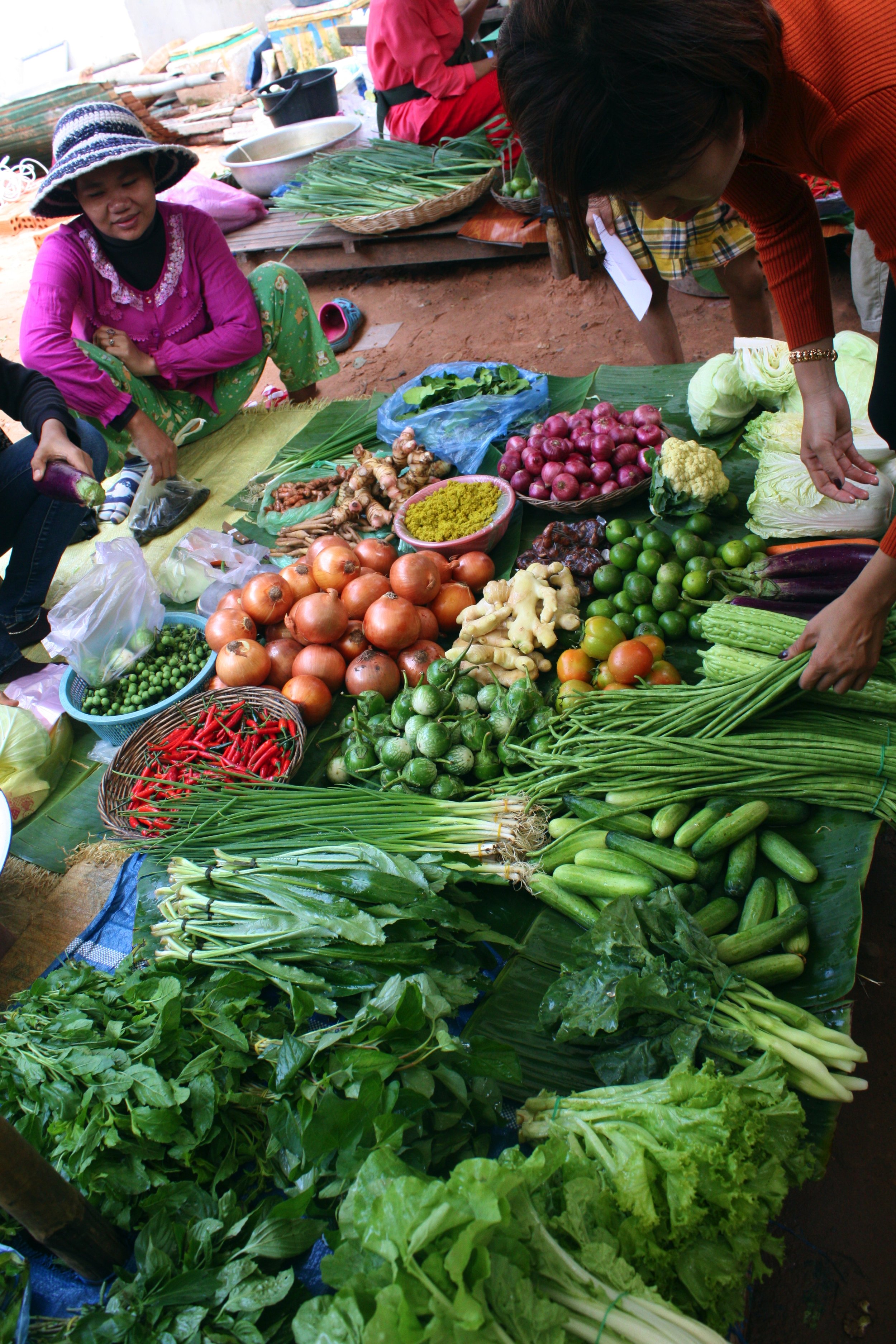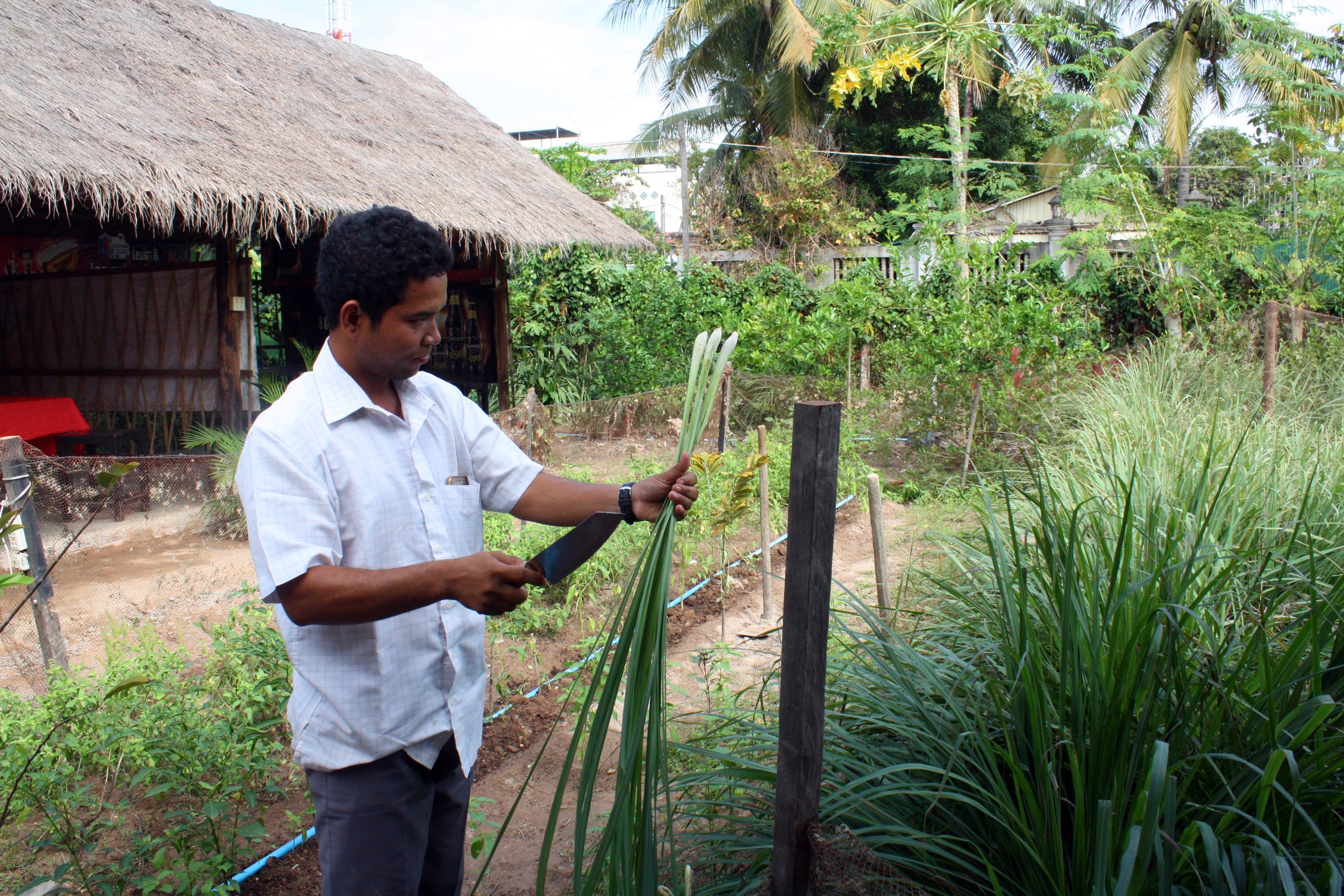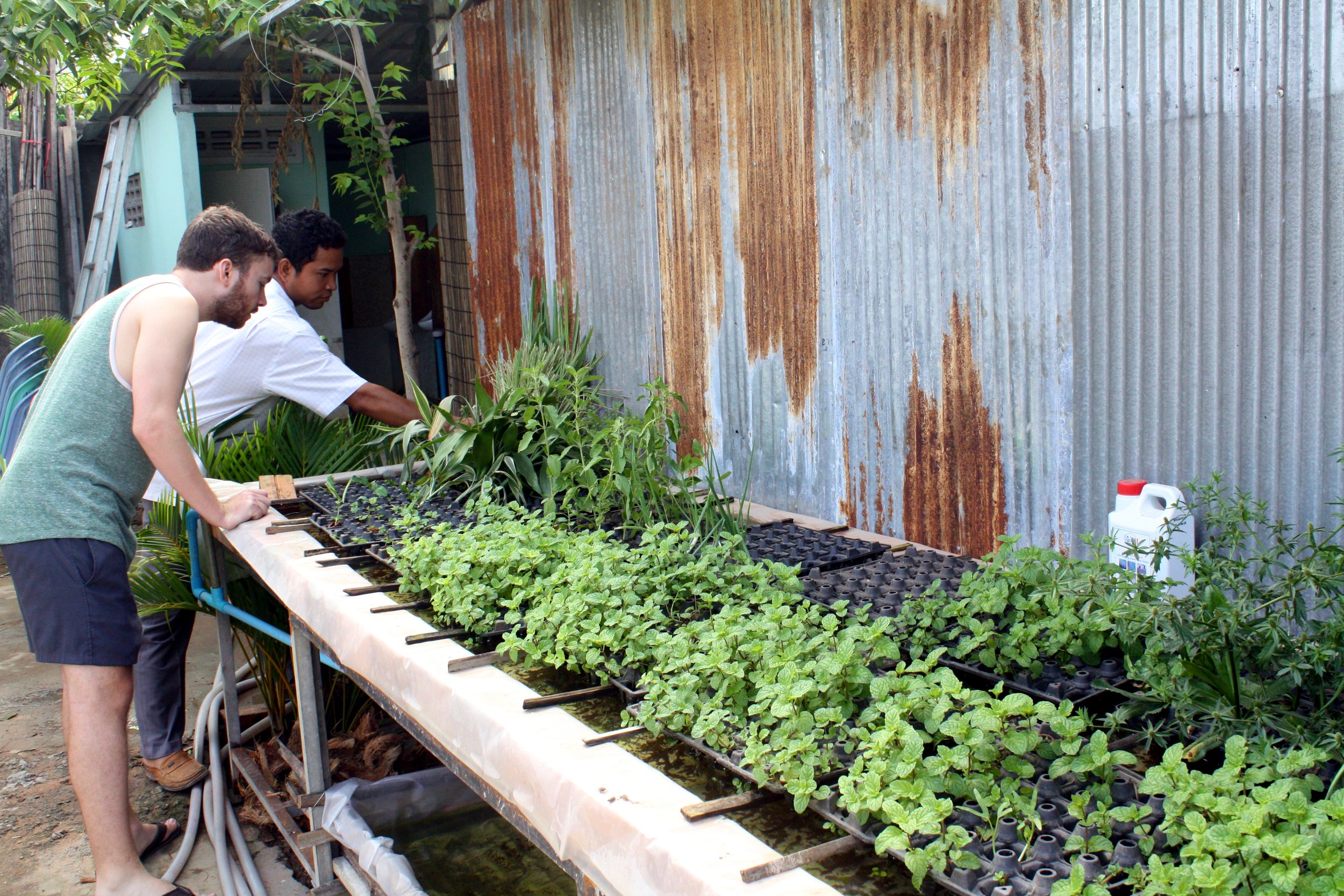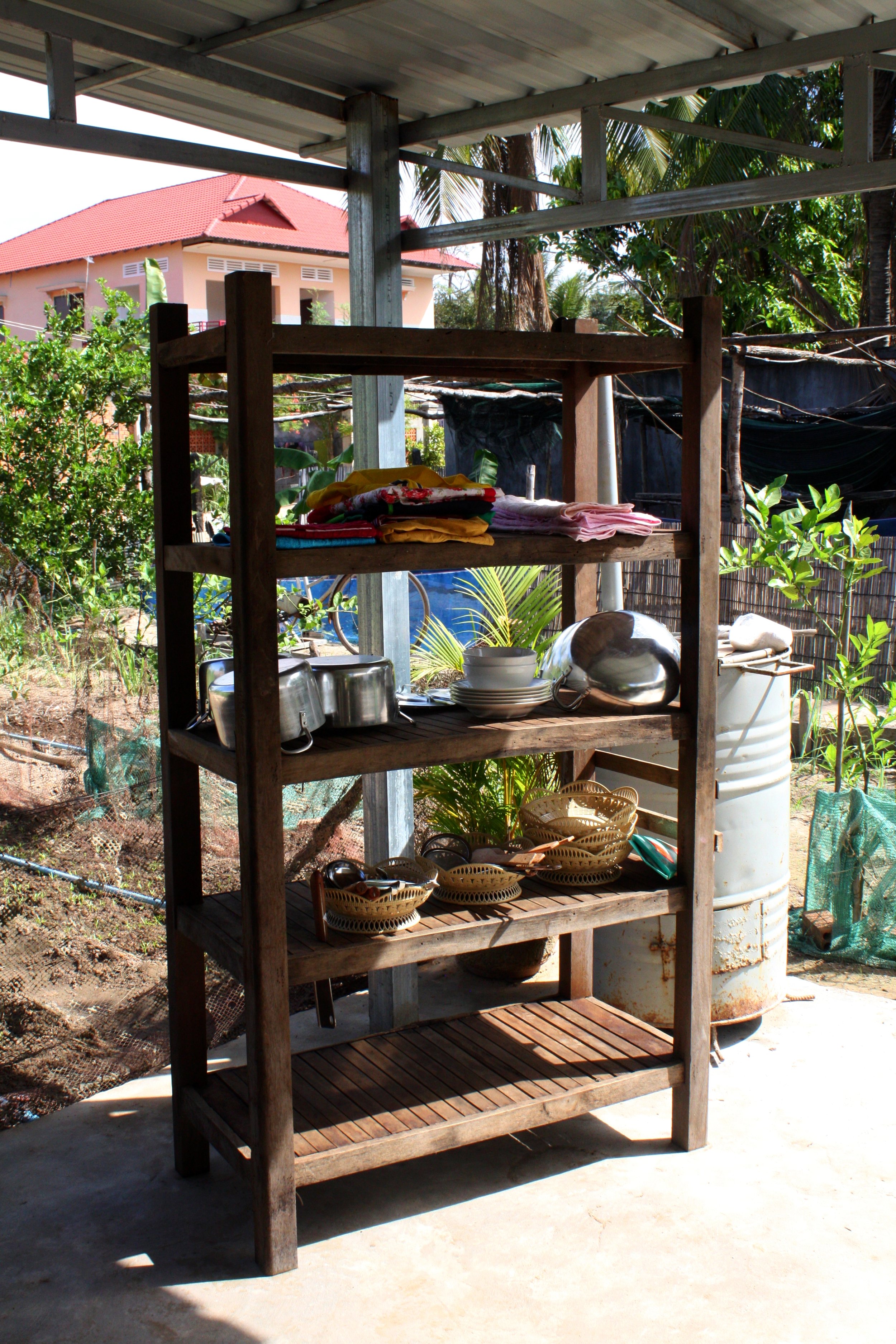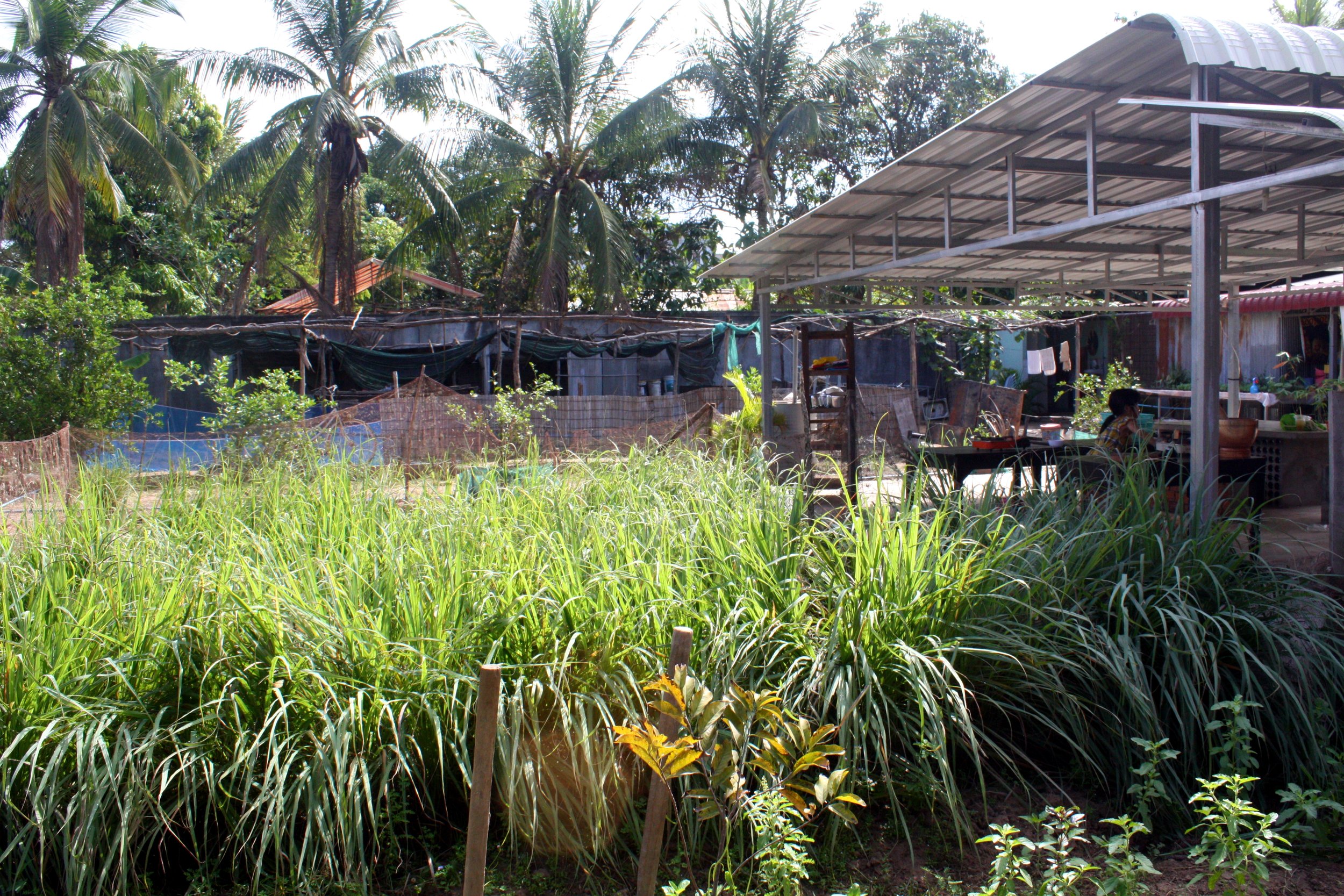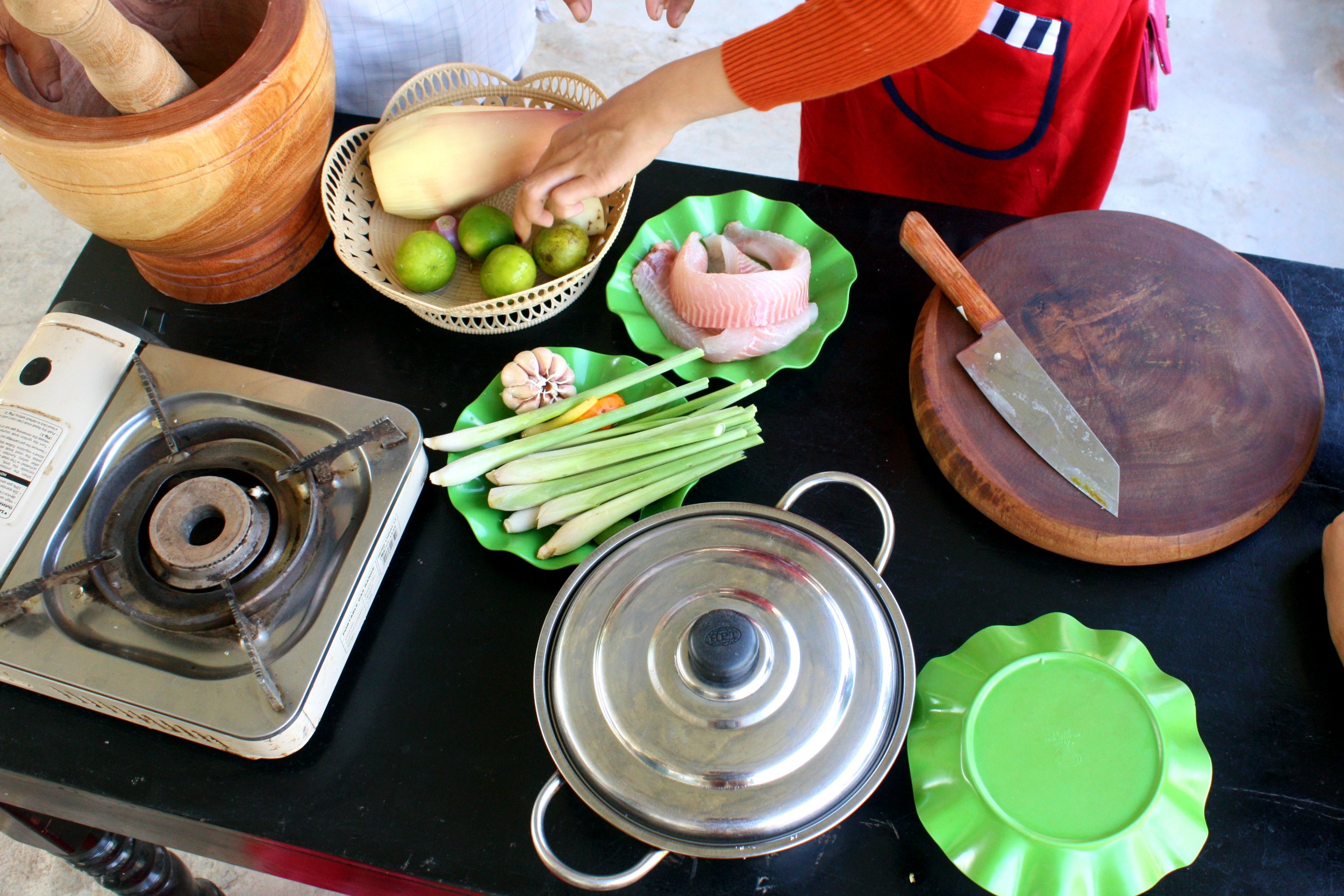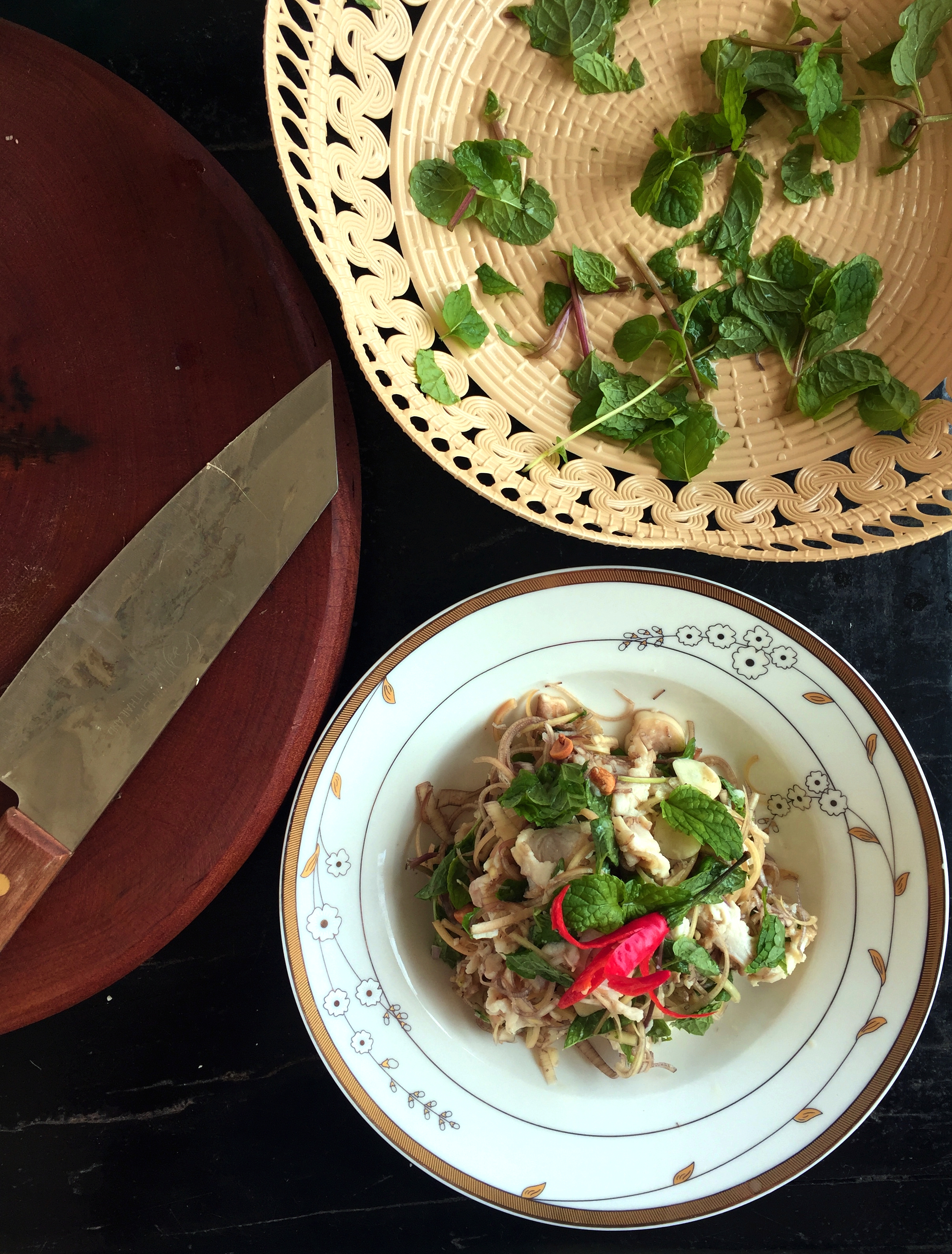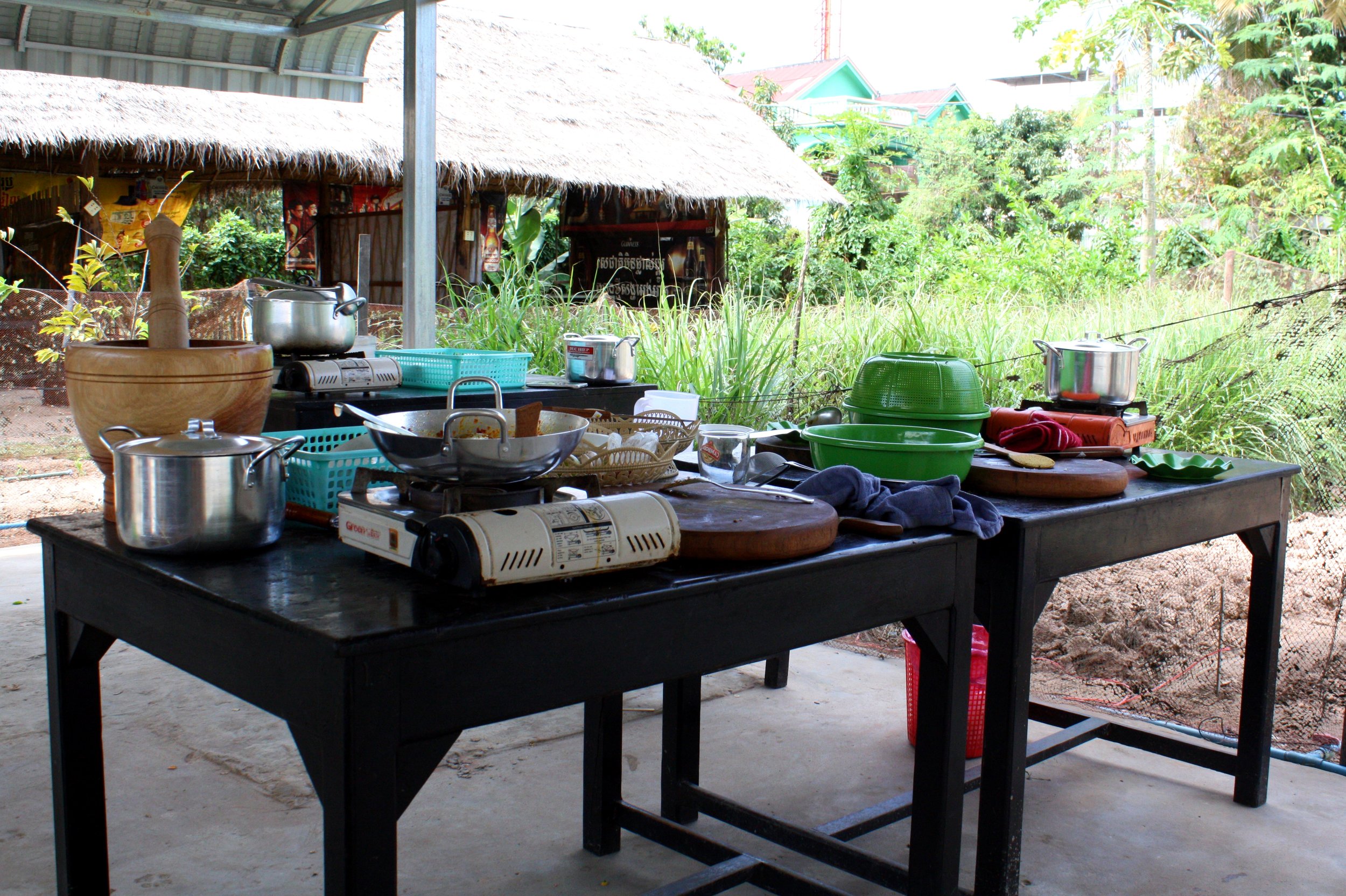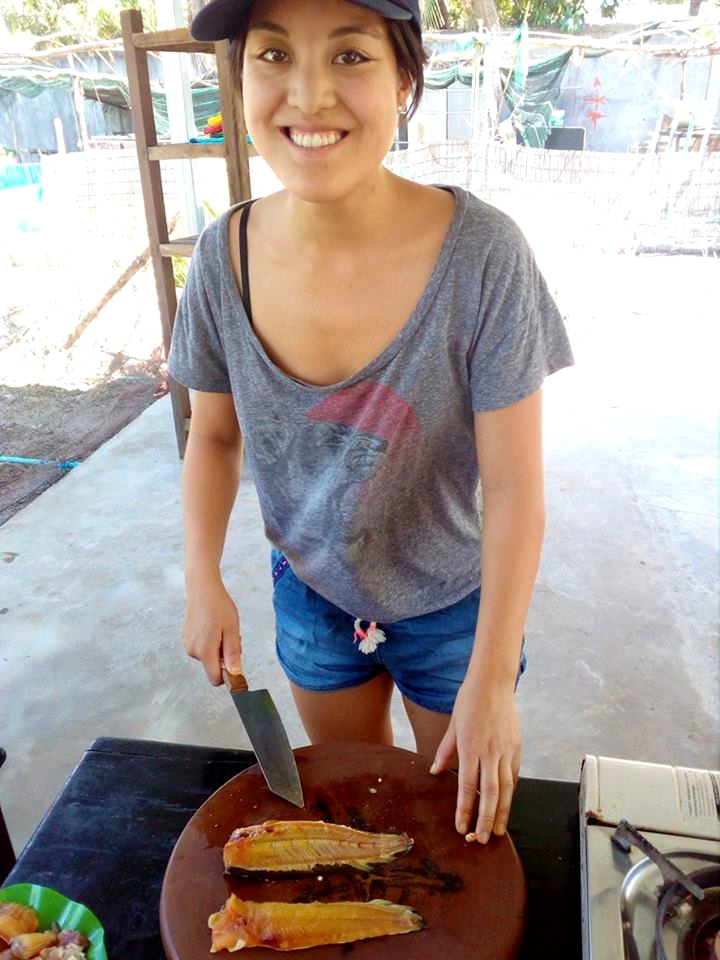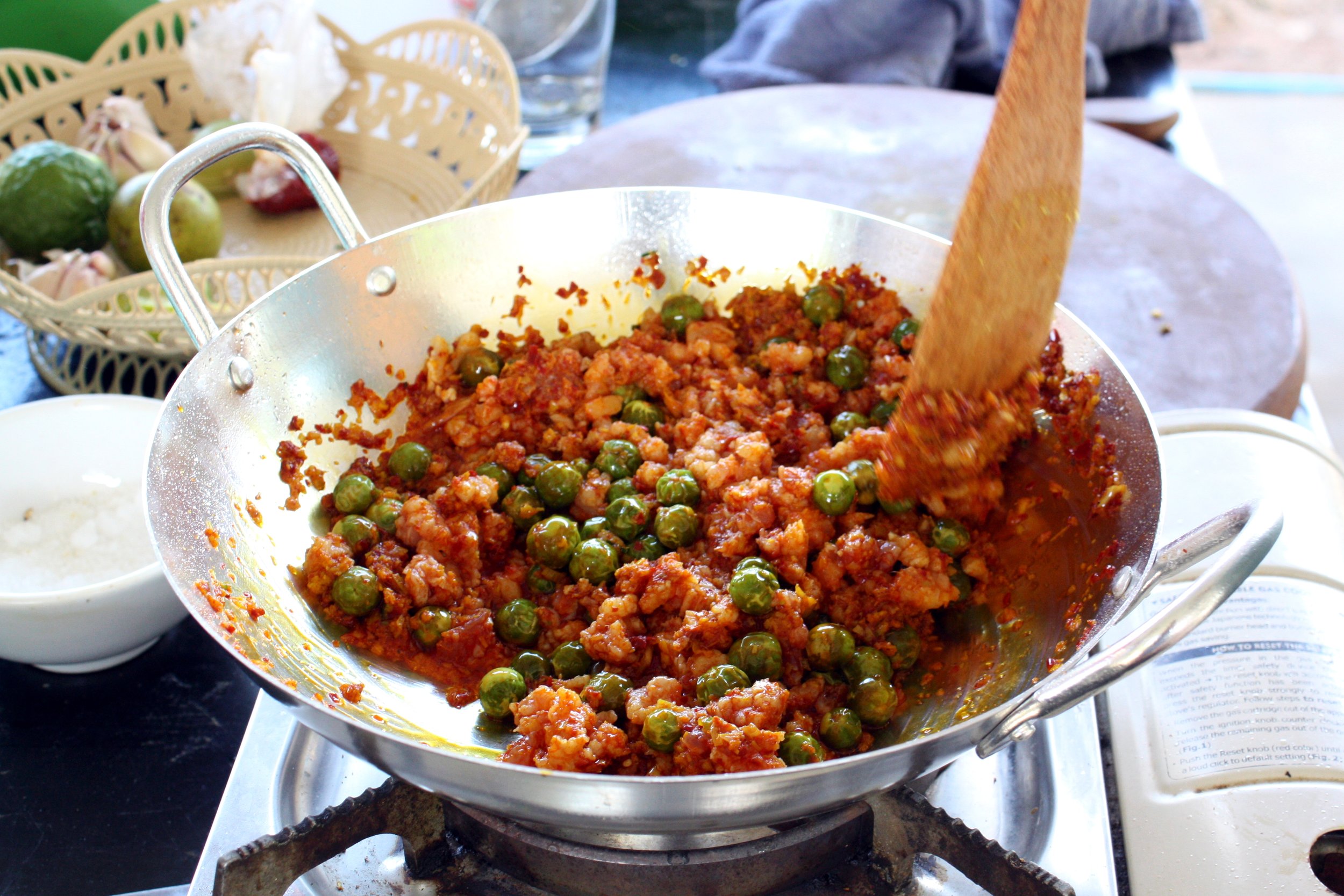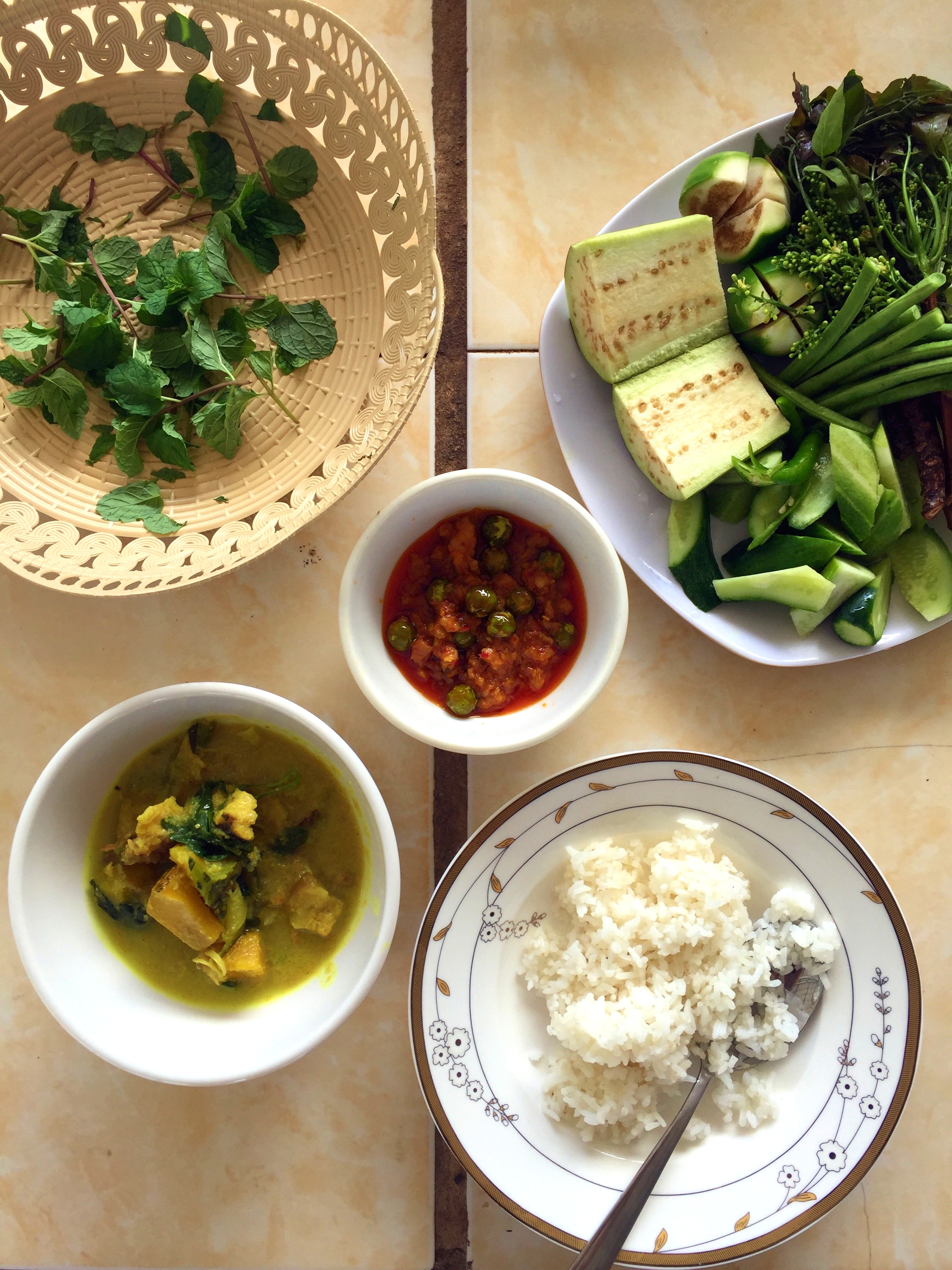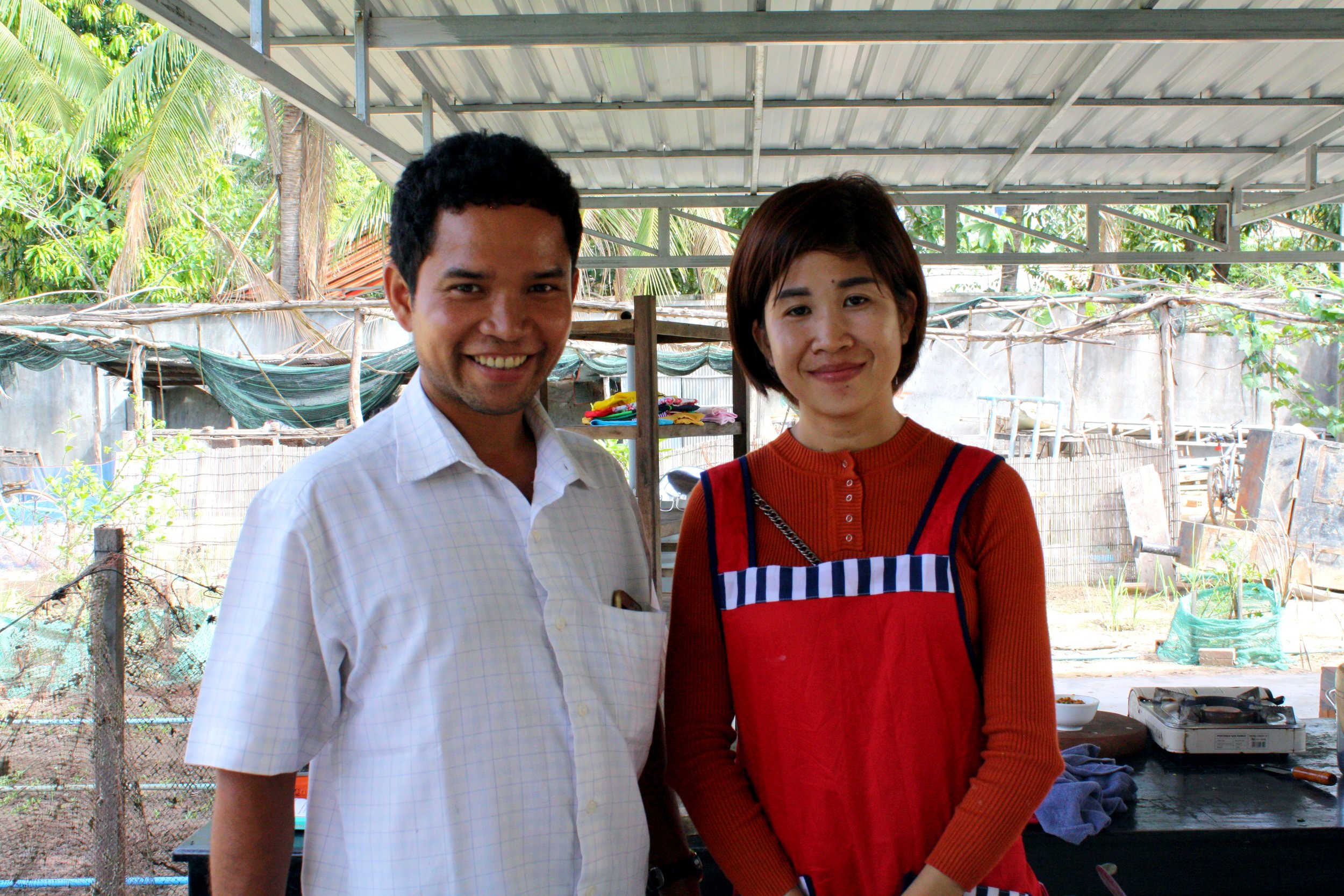Location: Siem Reap, Cambodia
Summary:
Sela’s class is a great way to get an in depth look at Cambodian food and culture in a family setting. He’s knowledgeable, passionate and on a mission to help his community and nearby farmers. We loved the opportunity to hang out with his wife, kids and dogs while cooking up some interesting dishes not found at standard tourist-friendly cooking classes.
Who should attend:
Adventurous home cooks and amateur chefs who want to dive head-first into Cambodian food and see how locals live and eat. Sela doesn’t expect you to shy away from prahok, a fermented fish that’s in almost all Cambodian dishes, (except for the ones geared towards foreigners) so the dishes you cook will have a lot of flavour. If you want to experience Cambodian food beyond amok, this is an excellent way to do so.
Dishes:
Banana flower salad with fish
This dish is essentially a ceviche combined with a coleslaw using crunchy banana flowers, prahok, lime and some aromatics.
Somlor Kakor - a mixed vegetable coconut milk soup
This soup is incredibly easy to put together: add your vegetables, coconut milk, aromatic paste and pork to a pot, then heat. Add fish at the end.
Prahok Katis - minced pork and fermented fish dipping sauce/ ragu
Prahok Katis is a great way to experience the full flavour of prahok. It's a dish of minced pork, tiny eggplants, an aromatic paste and prahok fried together, then seasoned with sugar and fish sauce. It's pungent, but it works incredibly well as a dipping sauce for fresh vegetables.
Babor Tra-ov - Taro root with sticky rice stewed in coconut milk
Can't go wrong here! Sticky rice is often used in desserts here, and this one doesn't disappoint.
Full Review:
Sela’s class didn't feel like a well oiled money making machine, but rather a personal experience in which he shared his relationship with food and culture. He’s not running the class for money, he's running it because he wants visitors of Cambodia to have the opportunity to get to know the side of Khmer cuisine that regular Khmers eat, rather than just the Western-palate-friendly options. He's one of the few people in Cambodia who doesn't subscribe to the belief that prahok is only for Khmers, while curry is for tourists. It's very refreshing.
Using prahok highlighted one of the greatest joys of a good cooking class: getting to know and feel comfortable with a new ingredient. In this class, we cooked 3 savoury dishes and used a bit of prahok in each one. We saw how it can subtly enhance a slaw style salad, how it boosts a coconut soup, and finally how it tastes in a very prahok-forward dipping sauce.
Prahok is the cornerstone of Cambodian food, and the fact that Sela and his wife are eager to share it with new people makes this class stand out completely from any other class advertised in Cambodia. From all of our research, there is nothing like this in all of Cambodia so far. Seriously.
Another standout feature of the class is the setting. The class takes place between Sela’s restaurant and his garden, where he grows lemon, lime and kaffir lime trees, as well as fresh lemongrass and a variety of herbs. From this garden, Sela also teaches local farmers techniques to make lime trees produce fruit out of season and how to irrigate their fields properly. When we first arrived, he gave us a grand tour of the garden, stopping to pick herbs and leafy greens that we would later use in our recipes. Sela called his garden “natural refrigeration” - it’s how Khmers make sure that their vegetables are fresh when they cook them!
All in all, this was without a doubt the highlight of our trip to Cambodia. We felt completely welcome in Sela’s home for the day, had easy and educational conversations with him, and walked out with a deeper knowledge of Cambodian food and culture. We can't recommend this experience highly enough.
What we learned:
Prahok is a great way to boost umami in dishes and a fantastic use of an over-abundant supply of fish. Without refrigeration, you have to make a big catch go a long way, and Cambodians certainly know how to make the most of freshwater fish.
Speaking of refrigeration, the widespread lack of it in Cambodia clearly shapes the way Cambodians go about their day-to-day lives. Shopping for food is necessarily a daily activity for most people, and rather than buying leafy greens at the market, many people still rely on whatever is growing on the side of their house to throw into soups and salads. As Sela says, natural refrigeration!
The last lesson is maybe obvious to most people: things grow quickly in places with no winter! Sela had trees on his property that could have been ten years old in Canada, but he planted them a year and a half ago or less.
Rating:
★★★★★
If you’re interested in taking a class with him, we’d be more than happy to set you up. He’s currently in the process of getting it kickstarted and is definitely looking for people who want a truly Cambodian experience. Email us at mybfisgf@gmail.com.


